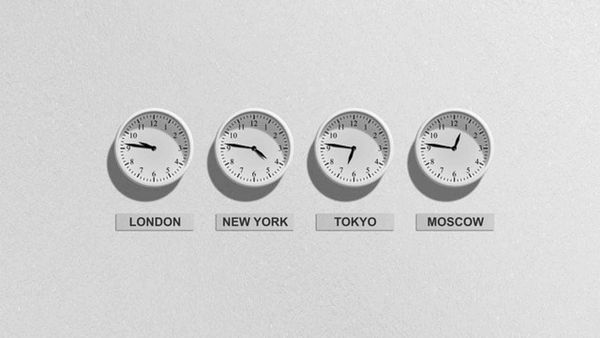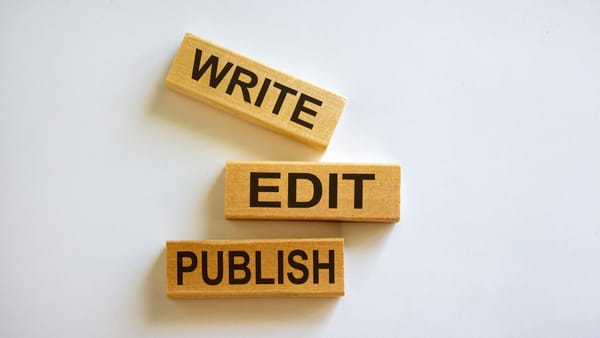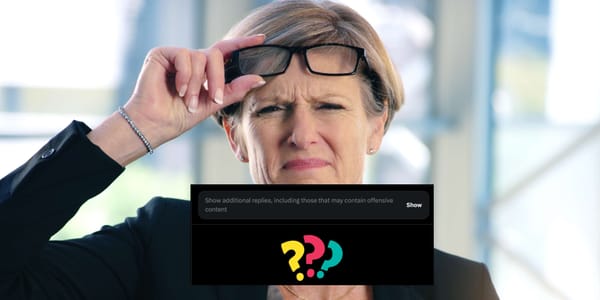Some tweets go viral and others barely make a ripple—even when the content is equally good. The difference often comes down to timing. Viral tweets aren’t just “great tweets”; they’re tweets that hit the timeline when the right audience is active and ready to engage.
I’ve seen tweets with brilliant insights, hilarious punchlines, or valuable tips get almost no attention—simply because they were posted when most followers were asleep, working, or away from their screens. On the flip side, I’ve seen fairly average tweets go semi-viral just because they were posted at a high-traffic time.
This isn’t coincidence—it’s how Twitter’s algorithm works.

Why Timing Is Everything
1. Early Engagement Boosts Reach
Twitter’s ranking system rewards tweets that get quick engagement. In the first few minutes after posting, it measures:
- Likes
- Retweets
- Replies
- Link clicks
- Dwell time (how long people look at the tweet)
If your tweet does well in those first moments, the algorithm pushes it to more people. If it doesn’t, the tweet’s reach slows down dramatically.
Example: If you post at 3 AM and your audience is mostly in New York, you might only get a handful of likes in the first hour. The algorithm sees this as low interest and stops promoting it—by the time your followers wake up, the tweet is already buried.
2. Freshness Bias in the Feed
Twitter values fresh content. Most users’ timelines prioritize newer posts, especially if they follow a lot of accounts. If your tweet is buried under 50 others by the time someone logs in, they’ll likely never see it.
Example: Let’s say your followers are most active at 7 PM. If you post at 4 PM, by 7 PM their feed will already be full of other posts. But if you post at 7:05 PM, you’re near the top when they log in.
3. Network Effects Multiply Visibility
The moment your engaged followers interact with your tweet, it can be shown to their followers. This secondary exposure is where true virality starts. But it can only happen if that first layer of followers is online to see it.
Example: If a follower with 20k followers likes your tweet while their audience is active, your tweet’s reach explodes. But if they like it hours later, the moment has passed.
Key Takeaways: General Best Times to Post on Twitter
While there’s no universal magic hour, studies show these time blocks often perform best (local time for your audience):
- Mondays: 1–3 PM & 6–9 PM
- Tuesdays: 9–10 AM, 1–3 PM, & 6–9:30 PM
- Wednesdays: 12–3 PM & 6–9:30 PM
- Thursdays: 1–3 PM & 7–10 PM
- Fridays: 2–4 PM & 6–9 PM
- Saturdays: 11 AM–12 PM & 8–10 PM
- Sundays: 11 AM & 11 PM
Weekdays in general: 12–3 PM on Wednesdays and Thursdays
Weekends in general: 11 AM–12 PM on Saturday

These windows tend to work well because they align with lunch breaks, end-of-work browsing, and evening downtime. But they’re still just starting points.
Why “Best Times” Are Personal
Your audience might be completely different from the averages. For example:
In my own case, I noticed my engagement peaked between 8–9:30 PM, even though most generic lists suggested mid-afternoon. That’s because my followers are spread across multiple time zones and many check Twitter after work.
This is why guessing based on generic times can cost you reach—you need data on when your followers are active.
How I Find My Best Time with Circleboom Twitter
To get accurate data, I use Circleboom Twitter—an official partner of Twitter/X. Unlike generic guides, it analyzes my audience’s actual activity and shows:

- Which hours they’re most active
- How activity shifts between weekdays and weekends
- Patterns across time zones
Once I know my peak windows, I don’t just wait to post manually—I schedule tweets for those times so I never miss the engagement wave.
Step-by-Step: Using Circleboom to Find & Use Your Best Time to Tweet
Step #1: Log into Circleboom Twitter and open X Post Planner
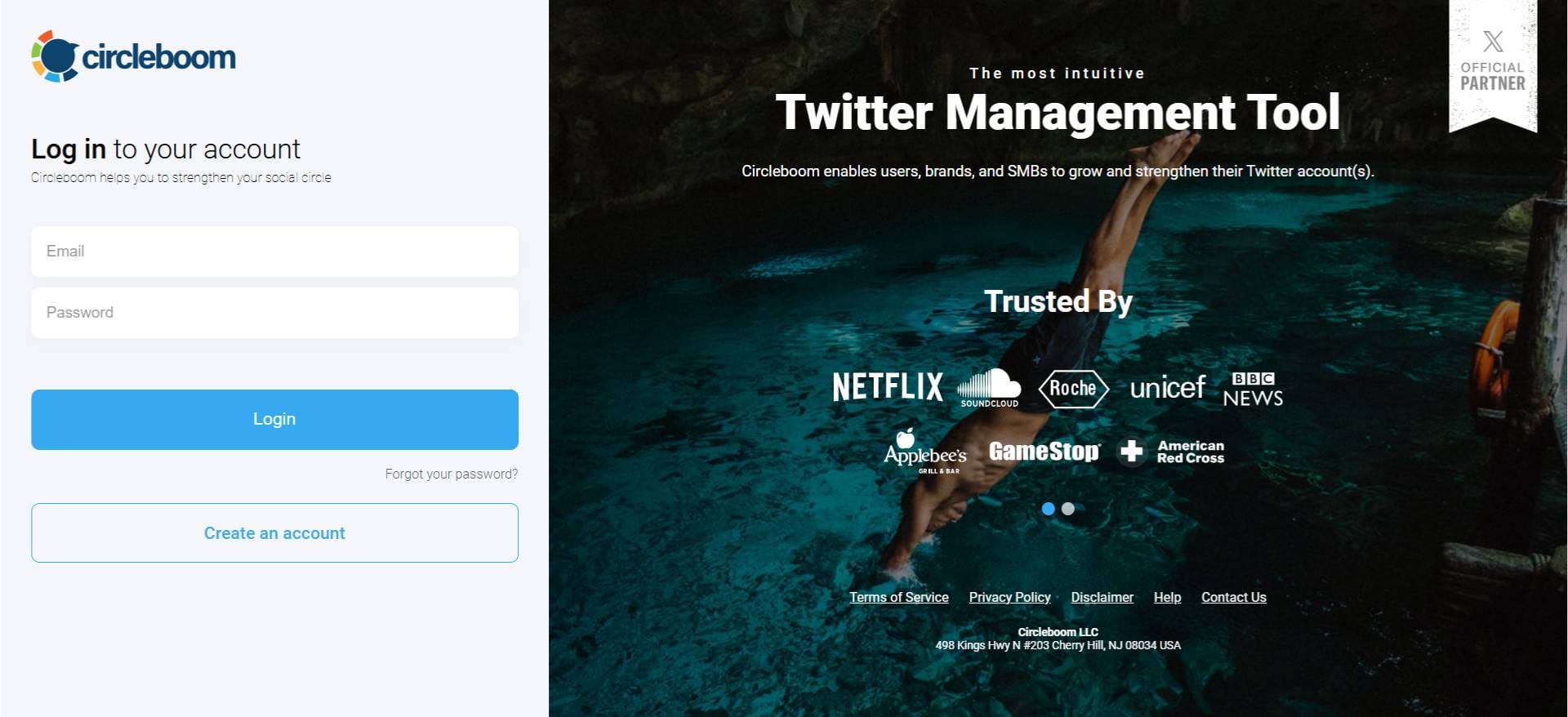
After logging in with your X account, go to the left-hand menu and click on “X Post Planner + AI Writer.”
Click the “Write & Plan Your Post” button to begin crafting your tweet.
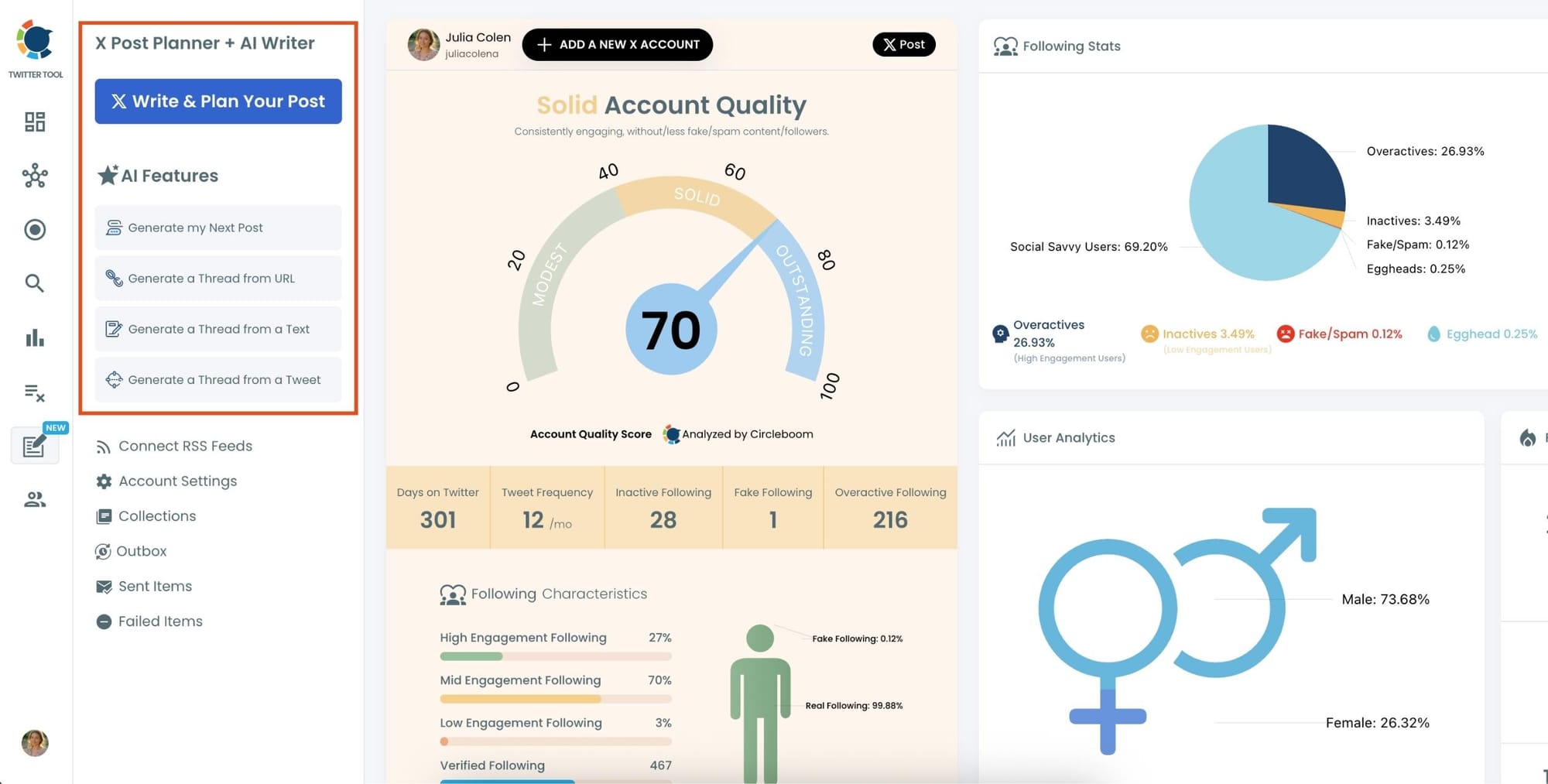
If needed, you can also use the built-in AI tools to generate your next tweet or create a thread from a URL, a block of text, or even another tweet.
Step #2: Add visuals to enhance your post
You can upload images or videos, add a GIF, pull high-quality photos directly from Unsplash, or design something custom using Canva—all without leaving Circleboom.
These media options are available under the image icon in the editor.
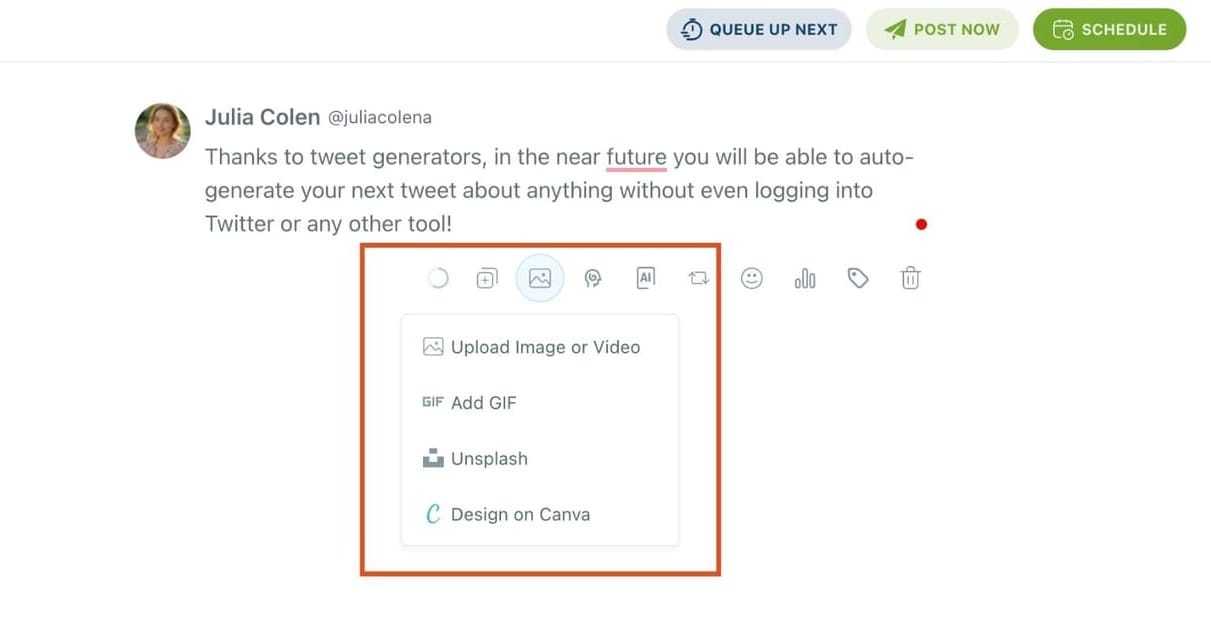
Step #3: Use AI to write and improve your text
You can create a new tweet or rewrite your tweet with the AI Tweet Generator to make it more punchy, add emojis or hashtags, fix grammar, rephrase for clarity, or even continue writing where you left off.
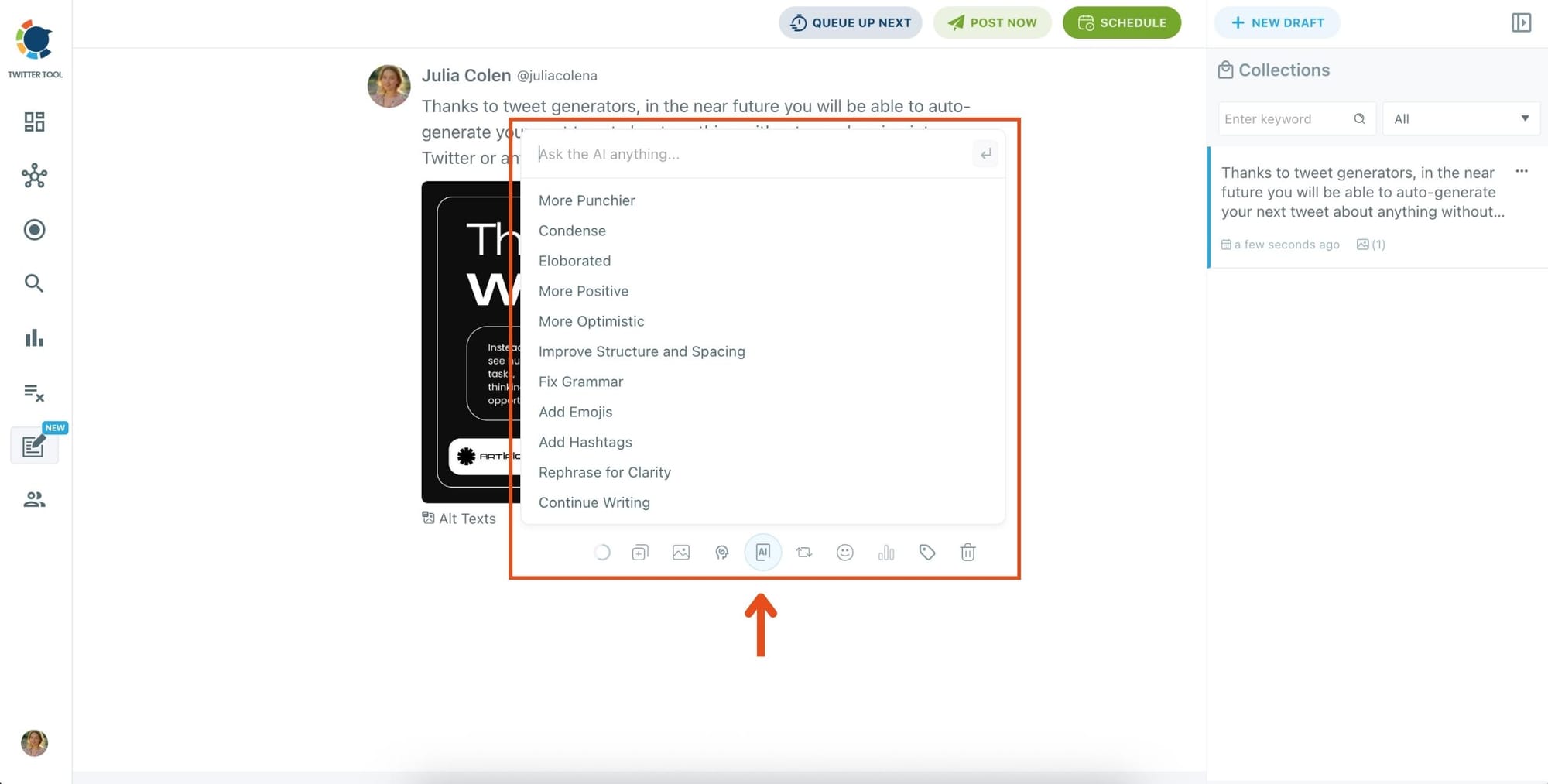
The AI tools are designed to match your tone—whether you want something professional, casual, or energetic.
Step 4: Set auto-repost to increase visibility
You can turn on the Auto Repost feature to reshare your tweet automatically.
Set how long to wait before reposting, when to un-post it, and how many times to repeat the cycle.
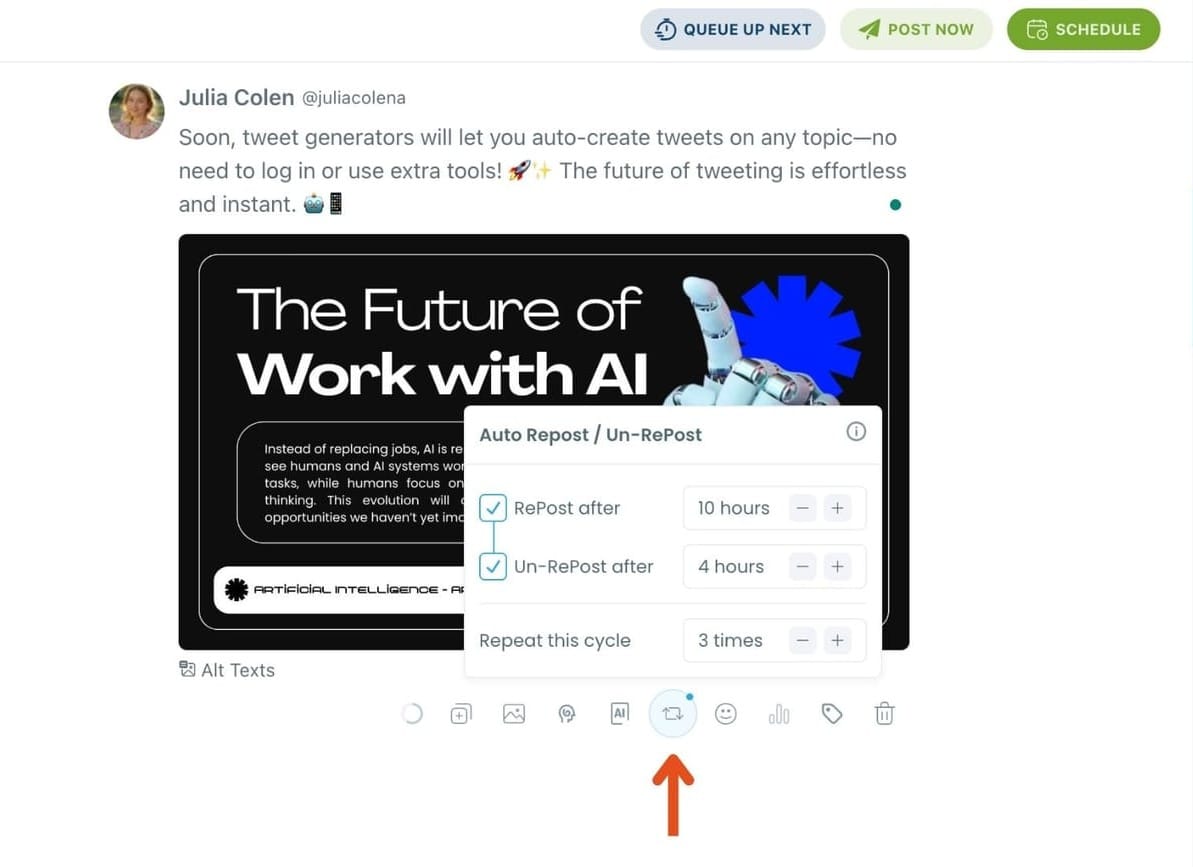
This is a useful way to reach followers across different time zones without any manual effort.
Step #5: Post or schedule your tweet
Once your tweet is ready, you can choose to post it immediately or click the green “Schedule” button to post it later.
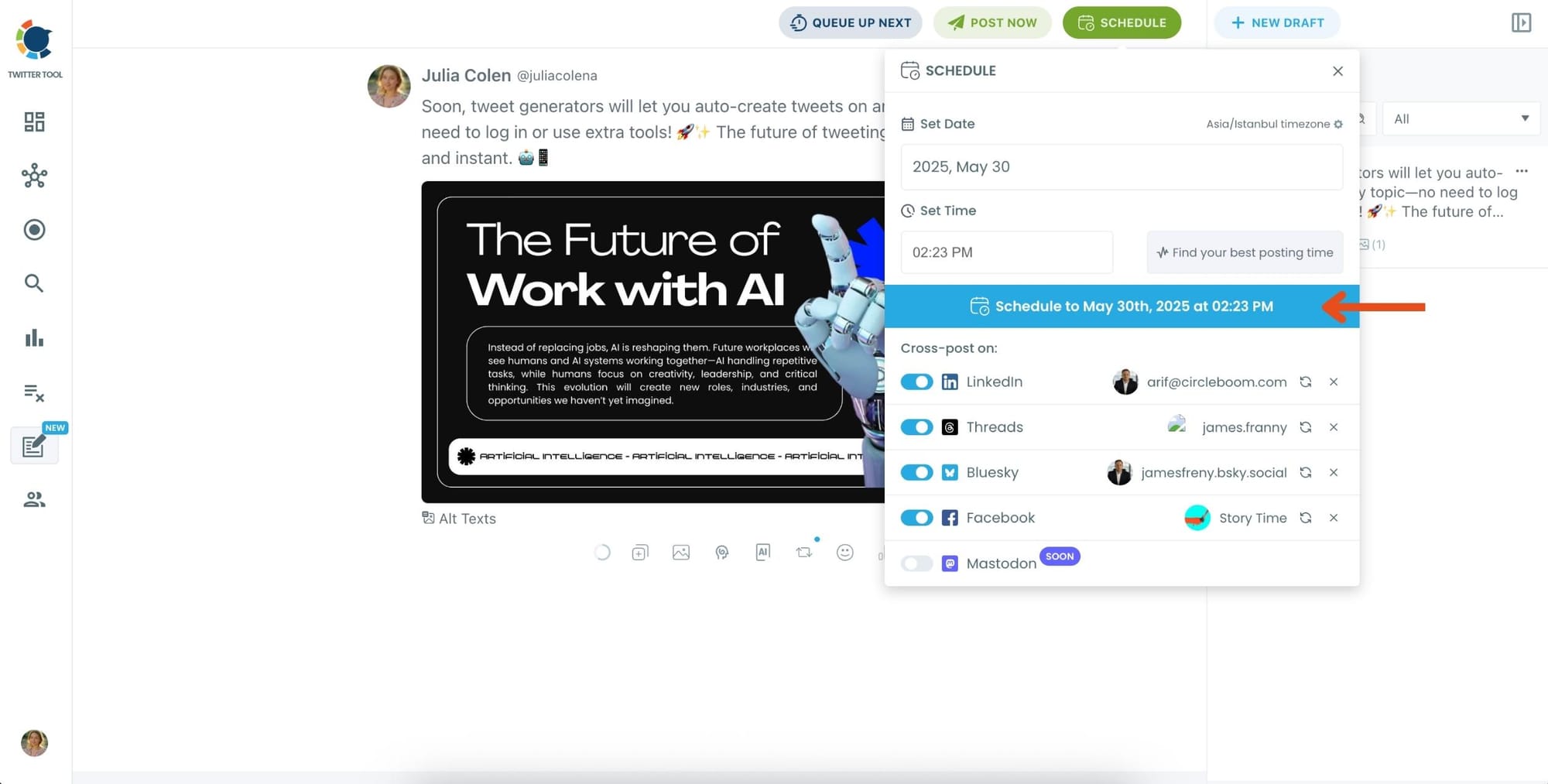
You can choose the exact date and time or let Circleboom suggest the best posting time based on your audience activity.
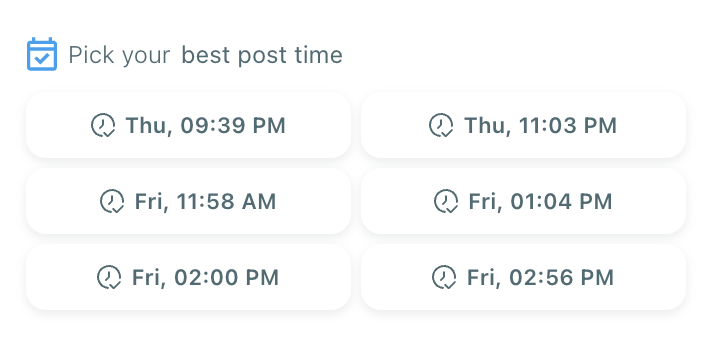
Your tweet will be automatically published at the optimal moment.
Bonus Tip: Cross-post to other platforms
You can publish your tweet not just on X, but also on LinkedIn, Threads, Bluesky, and Facebook—all from the same screen.
Just toggle the platforms you want, and Circleboom will handle the rest.
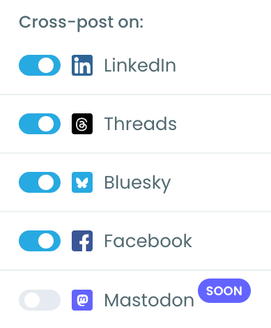
Pro Tips for Maximizing Early Engagement
➡️ Be active when your tweet goes live. Reply to comments in the first 15 minutes to boost activity.
➡️ Hook them early. The first line of your tweet should make someone stop scrolling.
➡️ Match format to time slot. Long threads often work earlier in peaks; short takes can go later.
➡️ Avoid “dead zones.” If your heatmap shows low activity, skip those hours even if a generic chart says otherwise.
Real-World Example: Same Tweet, Different Time
I tested this myself:
- Posted at 11 AM: 2,400 impressions, 15 likes, 4 retweets
- Posted at 8:20 PM (my peak time): 8,900 impressions, 74 likes, 21 retweets
Same text, same hashtags, same day of the week—just different timing. The result? 3.7× more reach just by hitting the right window.
Conclusion
A well-written tweet at the wrong time is like delivering a brilliant speech to an empty room. Timing is not an afterthought—it’s the multiplier that can make good content great.
By knowing when your followers are online and using tools like Circleboom Twitter to schedule at those peak moments, you give every tweet the best chance to succeed. Combine that with great content, and you’re stacking the odds heavily in your favor.

